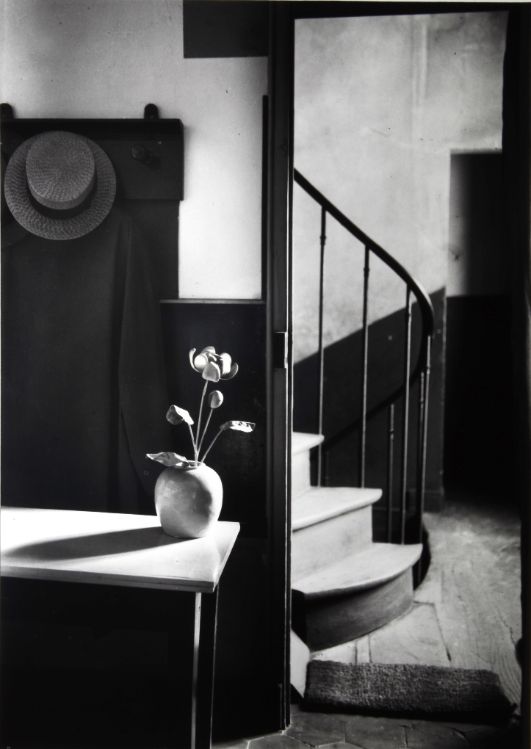André Kertész is widely regarded as one as of the most important figures in the history of photography. Although he failed to gain popular recognition in the early stages of his career, his later photographs are now amongst the most famous images of the twentieth century.
This image is perhaps one of André Kertész’s most recognised photographs. It was taken at the studio of the artist Piet Mondrian in 1926. Kertész set about trying to capture the spirit of the Dutch artist’s paintings, of whom he had stated, “he simplified, simplified, simplified. The studio with its symmetry dictated the composition. He has a vase with a flower, but the flower was artificial. It was coloured by him to match the studio.” Mondrian had imposed a rigid geometric order on everything in the apartment, punctuated in the photograph by the curves of the staircase, the vase and a boater hat – belonging to the painter and writer, Michael Seuphor.
Having emigrated to Paris some years before Kertesz, in 1911, Piet Mondrian was influenced by the avant-garde artists that dominated its thriving art scene, such as Pablo Picasso and Georges Braque. Mondrian an initiator of the abstract ‘De Stijl’ movement in the Netherlands, as Picasso’s early cubist works struck a cord with Mondrian. The artist began to concentrate his style down to the very essentials, straight black lines and the three primary colours, paintings which are now recognised as his most famous works.
Like many photographers, Kertesz visited the subject in his studio several times during 1926 in order to establish a relationship with Mondrian and his environment. In Chez Mondrian, Kertesz captures the interior world of the painter – away from the hustle and bustle of the streets of Paris. Unlike the expected image of a chaotic, paint splattered studio, Mondrian’s studio is captured in complete order. Kertesz’s photograph revealed that, similarly to his paintings, the artist sought to order and categorise every aspect of his life, down to the fake flower matching the interior. Kertesz’s photograph subtly captures the painters style and beliefs, successfully reflecting the formalism present in Mondrian’s paintings
(By Flora Miller)
